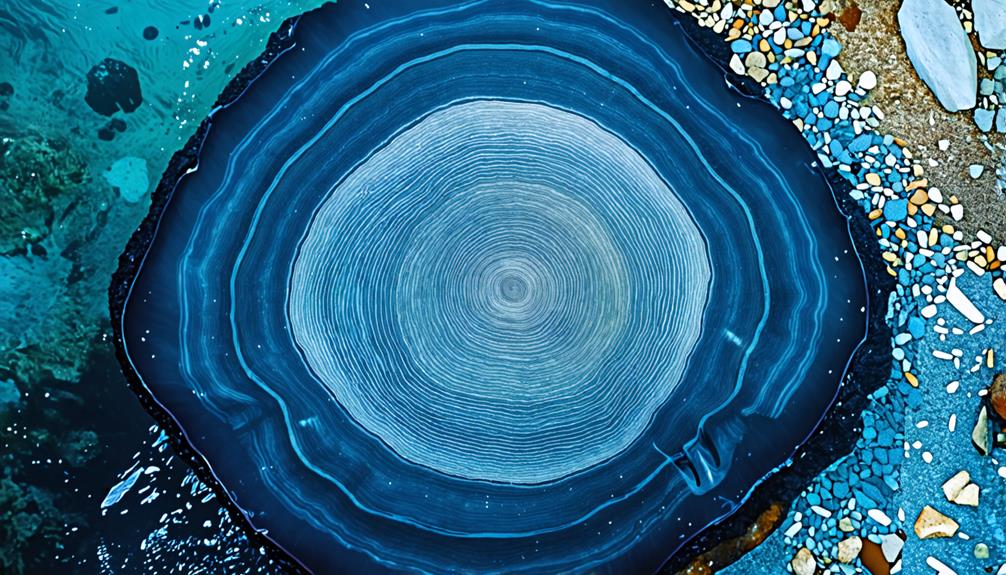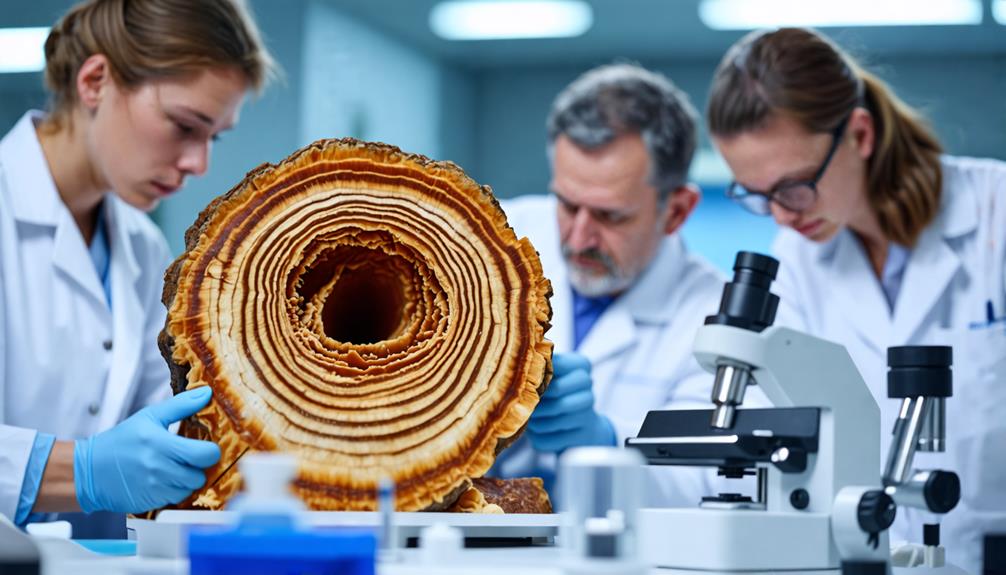You've probably never given much thought to whale earwax, but it turns out this waxy buildup holds a treasure trove of information. Scientists have discovered that these cetacean ear plugs are like time capsules, revealing not only a whale's age but also its life story. By examining the layers of earwax, researchers can uncover details about a whale's stress levels, feeding habits, and even the environmental conditions it experienced throughout its life. This unexpected source of data is revolutionizing our understanding of these marine giants, but there's more to this story than meets the eye.
Key Takeaways
- Whale earwax forms solid plugs with layers called laminae, which accumulate over time.
- Each lamina represents approximately six months of growth, similar to tree rings.
- Scientists can count the number of laminae in an earwax plug to determine a whale's age.
- Earwax plugs can reach up to 10 inches long in blue whales, providing a long-term record.
Earwax as a Whale's Timeline

Believe it or not, a whale's earwax serves as a detailed timeline of its life, offering scientists a unique window into the animal's history.
As a whale ages, its earwax accumulates in layers called laminae, forming solid plugs that can reach up to 10 inches in blue whales. These laminae, deposited every six months, create a chemical biography of the whale's life. By counting these rings, much like tree rings, researchers can determine a whale's age with remarkable accuracy.
But that's not all – the earwax also captures information about the whale's stress levels through cortisol concentrations and its environmental exposure over time. Dark layers in the earwax indicate migration or fasting periods, while light layers represent feeding times.
This fascinating method has revolutionized whale research, providing insights that were previously unavailable through traditional whaling data.
Decoding Cetacean Stress Levels
Through the intricate analysis of whale earwax plugs, scientists have revealed a treasure trove of information about cetacean stress levels over time.
These plugs act as a timeline, recording cortisol levels that indicate environmental stressors and human impacts on baleen whales. You'll find that peaks in cortisol levels correlate with intense whaling activities, particularly in the 1960s when about 150,000 whales were harvested.
Notably, even after whaling decreased, stress levels continued to rise due to non-lethal factors like ship noise and pollution. Historical data shows notable stress increases during World War II, despite reduced whaling, highlighting indirect stressors' impact.
As you explore this research, you'll discover that earwax analysis helps track long-term stress responses in whales, potentially offering insights into their health and the broader effects of climate change on marine ecosystems.
This method complements traditional age determination techniques for whales.
Environmental Impacts Through Time

Building on the insights from earwax analysis, you'll find that whale stress levels serve as a powerful indicator of environmental impacts over time.
The chemical analysis of whale earwax reveals a historical record of cortisol, a stress hormone, spanning 146 years. You'll notice significant peaks during periods of intense whaling, particularly in the 1960s.
Notably, elevated cortisol levels during World War II, despite decreased whaling, point to other environmental stressors like noise pollution and habitat disruption.
The global whaling moratorium in the early 1970s led to decreased stress levels, showcasing the positive effects on whale health.
However, recent studies show rising cortisol levels, attributed to ongoing threats from climate change, ship noise, and pollution.
This long-term data provides vital insights into human activities' effects on marine life and ocean ecosystems, highlighting the importance of continued environmental monitoring and conservation efforts.
Conclusion
You've discovered a fascinating window into a whale's life through its earwax.
By examining these waxy time capsules, you're revealing secrets about the whale's age, diet, and stress levels.
You're also gaining valuable insights into how environmental changes have affected these marine giants over time.
This innovative research method allows you to piece together a whale's life story, helping you better understand and protect these magnificent creatures for future generations.

Leave a Reply